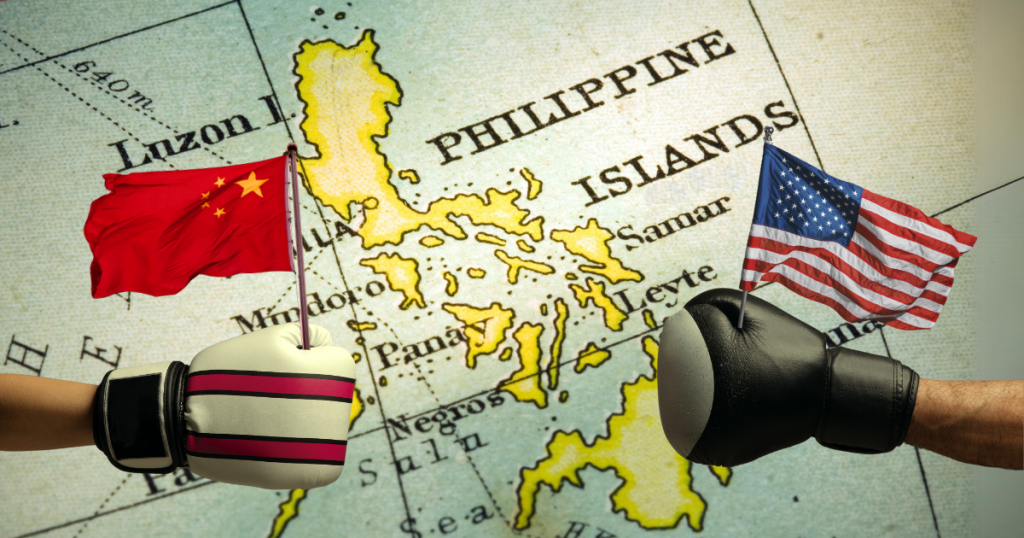The Unfinished Revolution Amidst Regional Conflict

By Col Dencio S. Acop (Ret), PhD | Date 02-26-2024
MANILA – There wasn’t much celebration of the 38th anniversary of the EDSA Revolution in the Philippines. It is not surprising. The current Philippine leader is the son of the past leader ousted in the renowned revolt.
What’s surprising is the Philippines’ re-pivot back to the orbit of the United States following Duterte’s pivot to China. The rivalry between the United States and China is now full-blown. The pivot to the Philippines’ former colonial master makes more sense as China has done nothing but occupy Filipino islets in the West Philippine Sea and violate the tiny country’s exclusive economic zone. China has done so despite a 2016 Arbitral Ruling sanctioned by the United Nations that upheld Philippine claims over China’s.
It is believed that China is now on the third stage of its grand strategy to challenge American global leadership. Since 2012, Beijing has advanced from strategic defensive through strategic stalemate to its current strategic offensive stance. Its recent actions indicate not only aims to assert regional leadership but global leadership as well putting it head-to-head with the United States. Asia is the world’s center of gravity today by all accounts. The region has 60% of global population, 42% of world GDP, 53% of global trade, and 59% of trade growth.
It therefore comes as no surprise that US alliances in the region are on the upswing. The global superpower has been deepening its five regional alliances with Australia, Japan, South Korea, Thailand, and the Philippines. It is also strengthening its security relationships with other regional partners like Taiwan, India, Indonesia, Singapore, New Zealand, Malaysia, Vietnam, Mongolia, and the Pacific Islands.
For the United States, the Philippines and Japan are most critical in the event of an escalation of conflict in the region. Taiwan is a flashpoint that could potentially trigger such escalation. Mainland China is hell-bent on ‘recovering’ Taiwan. From an American perspective, protecting Taiwan is a beachhead strategy at containing Chinese aggression in the region. It is reported that an American 4-star general has predicted a possible conflict with China over Taiwan sometime next year.
As far as the Philippines is concerned, US Defense Secretary Lloyd Austin has assured the Filipino leader that his country’s commitment of support to the Philippines is ‘ironclad’. To cement the alliance, the Philippines has now given access to nine of its military bases to the United States. These bases, spread throughout the Philippine archipelago, include five air bases, two naval bases, and two army bases.
The Philippines is investing 1.9 trillion pesos in the modernization of its armed forces to defend its territorial sovereignty and complement US efforts in the region. Its geo-political location puts the Philippines in the crosshairs of actions by either China or the United States or both as Philippine access grants flexibility enabling advantages to multiple theatres of engagement in both Northeast Asia and Southeast Asia.
To put the threat into proper perspective, assessing the distances between potential targets and missile launch locations as well as noting the effective ranges of bombs should be enlightening. The distance between Taiwan and the Philippines is only 1,205 kilometers. Between the Spratly Islands and Luzon is a mere 690 kilometers.
From China, the Spratlys are some 3,029 kilometers. In a conventional setting, launched tactical ballistic missiles would hit their targets anywhere between 150 and 300 kilometers away; airborne theatre missiles somewhere between 300 and 3,500 kilometers off. Ballistic missiles which are high-trajectory can effectively hit their targets anywhere from 1,000 kilometers to 5,500 kilometers away. They are only differentiated by their effective ranges: short, medium, intermediate, intercontinental, or submarine-launched.
Apart from ballistic missiles, there are also cruise missiles which are differentiated by their low flight. Missiles may be conventional or nuclear. Most missiles used are of the former type. ICBMs, however, are exclusively nuclear. And only three countries are known to use them: the US, Russia, and China.
Back to the unfinished revolution in the Philippines, the security events of today bear its scar not totally healed. Whether in its rise or fall, the Philippines has had its history entangled with that of the United States. It has been an American presence right at the heart of the Asia-Pacific region for half a century until the end of the Second World War and even beyond until the American bases in the Philippines were terminated in 1991.
Democratic nationalism ousted a once nationalistic turned dictatorial leader. But even domestic nationalism could not keep the country together electing to dislodge what symbolized its disunity, rightly or wrongly: the US bases. The ensuing void from the vacated power vacuum in the region was eventually occupied by a rising China which saw the same strategic value the Philippine archipelago presented the US.
The softness of local leaders and institutions merely facilitated the access of China into contested territory within Philippine sovereignty. The standoff exists to this day. The foothold that China has managed to secure for itself in the Philippines will be critical in case of any escalation of hostilities in the South China Sea. The presence of rivals China and the US is now actually in the Philippines. Security leaders of the three countries are no longer looking far.
Tags: Security
